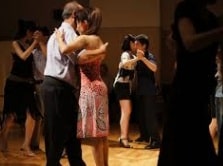It is interesting to know first of all the etymological origin of the term milonga that concerns us now. Specifically, we can establish that it is a word that derives from a Bantu language that exists in Angola that responds to the name Kimbundu. It comes directly from “mi-longa”, which can be translated as “saying things” or “talking” and which also gave rise over time to being identified with “deceptions”.
The notion of milonga has several uses. Thus, we cannot ignore that the RAE dictionary establishes a colloquial meaning among the meanings of that word. Specifically, it refers to a hoax or a story. In this case, other words that can act as a synonym for milonga are lie, lie, humbug, trola, paparrucha, pelota or even jácara.
According to another meaning mentioned by the Royal Spanish Academy ( RAE ) in its dictionary, the term refers to a work of Argentine folklore that, performed with guitar, is characterized by its nostalgic component and its dull rhythm.
 The milonga is also a composition in two-by-four time that stands out for its lively rhythm. In this case, the milonga is linked to the tango .
The milonga is also a composition in two-by-four time that stands out for its lively rhythm. In this case, the milonga is linked to the tango .
The copla and singing that accompany this type of musical creations are also known as milonga, as well as a dance in which a couple moves in unison.
Currently, the most common use of the concept of milonga refers to the event or room where milonga and, above all, tango are danced. “Going to the milonga” , in this framework, implies going to a place where it is possible to dance these genres.
There are several conventional rules that are usually respected in milongas, especially when the intention is to honor tradition. In a classic milonga, women and men stand around the dance floor, but not in the center; When a musical session begins, the men invite the women to dance.
To specify this invitation, the “nodding” is common: a movement with the head that the man makes to express to the lady that he wants to dance with her. If the proposal is accepted, the couple meets in the center of the milonga floor and dances until the end of the tanda.
There is also the so-called flamenco milonga, which has its origins in the settlers, artists and other people from Spain who returned to the country from the colonies back in the 19th century. It is considered that the first milonga of this type was one that Pepa Oro popularized at the end of that century.
However, another meaning that the term milonga has is that of a fight or discussion. An example of this use would be the following sentence: “Football motivated a milonga among the bar customers.”
Likewise, you should know that in some countries milonga is also used to refer to cocaine. This without overlooking the fact that in the Dominican Republic this term is used to colloquially refer to one of the official bills, specifically the RD$1,000 one.
